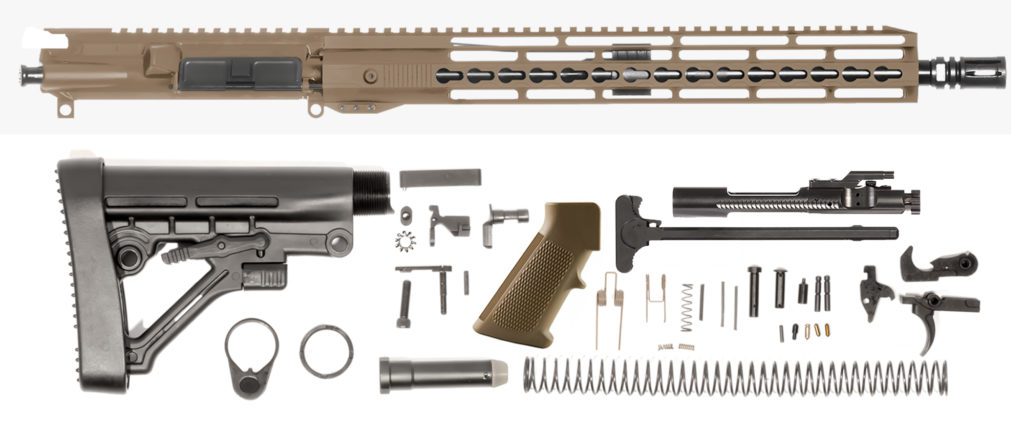Starting with AR-15 Build Kits presents the builder with numerous choices. Among these is determining the best barrel for their needs. Your AR-15 barrel is likely the most critical part of your weapon-building project. The gun?s barrel determines accuracy, effective shooting distance, your type of ammo, velocity, and more.
Review the considerations below when considering the best barrel for the AR-15 Build Kits you choose.
Length
Barrel length corresponds to projectile velocity. More length equals more velocity. This means your projectile travels ?flatter,? requiring less adjustment for range and increasing the range at which you can effectively hit targets. Longer barrels also allow for lower gas pressure inside your rifle, which makes the bolt, springs, and other internal components last longer. But, of course, a longer barrel is heavier, which makes carrying and using your rifle more difficult.
AR-15 barrels can be had in lengths between 7 and 24 inches, with 16 inches being the most common. It should also be noted that barrel lengths 16 inches or more do not require a Class III tax stamp from the ATF for legal possession and use.
Material
AR-15 barrels will be Chrome Moly (typically Chromoly or Chromoly Vanadium) or Stainless Steel. Each type has numerous sub-varieties, and the different alloys have varying wear characteristics. The quality of your barrel, your normal rate of fire, the barrel?s heat management characteristics, and the load pressure of your ammunition will all dramatically affect its life.
Profile
The profile is another term for weight when discussing barrels. AR barrel profiles typically come in three types:
- Lightweight
- Government
- Heavy
Heavier barrels resist heat buildup over extended firing. Since accuracy degrades with increased barrel heat, a heavier barrel is desirable for sustained fire uses. The tradeoff is heavier barrels are, well – heavier to carry. Most AR-build kits come with the government version because it provides an acceptable tradeoff between weight and heat management.
Finish
Most AR barrels come with a Melonite or anodized coating. These protective coatings create a matte black finish over the barrel and rifling to resist rust and corrosion. Stainless steel barrels resist rust and corrosion much better and need no extra coating.
Chrome-lining
Many AR-15 build kit barrels have their rifling lined with chrome to increase barrel life and protect against heat. A newer substance called Melonite is also used instead of chrome-lining because its supposed fewer flaws produce better accuracy. Chrome-lining is believed to diminish barrel accuracy measurably, but it dramatically increases barrel performance, especially with rapid fire.
Twist Rate
Twist rate is how often the barrel rifling rotates a round as it travels down the barrel?s length. Barrel twist rates are expressed in ratios, like 1:7. A 1:7 twist rate completes one full rotation every seven inches. AR twist rates are typically between 1:7 and 1:12. A round?s rotation increases its velocity and accuracy,
AR-15 Build Kits for Every Purpose
AR-15 build kits have the versatility to meet a wide range of shooters and shooting needs. Backyard plinking, target shooting, hunting, home defense, or competition ? you can create the exact AR-15 rifle you desire by changing numerous options, including the barrel.
Shop the CBC Industries online store to discover the many barrel options we offer for the AR-15, which can meet your specifications for accuracy, reliability, heat management, and more.

AR-15 Rifle Kits
CBC AR-15 rifle kits present you with an opportunity to acquire an AR-15 rifle at a discounted price by enabling you to take on the assembly process yourself. We provide a versatile selection of AR-15 rifle kits in multiple calibers and configurations. Our AR-15 rifle kits offer superior quality, dependability, and performance that will satisfy the most demanding shooter. The quality of our AR-15 rifle kit parts are backed by our Lifetime Warranty ? if any component of a CBC rifle kit becomes defective, CBC will repair or replace it at no charge.
